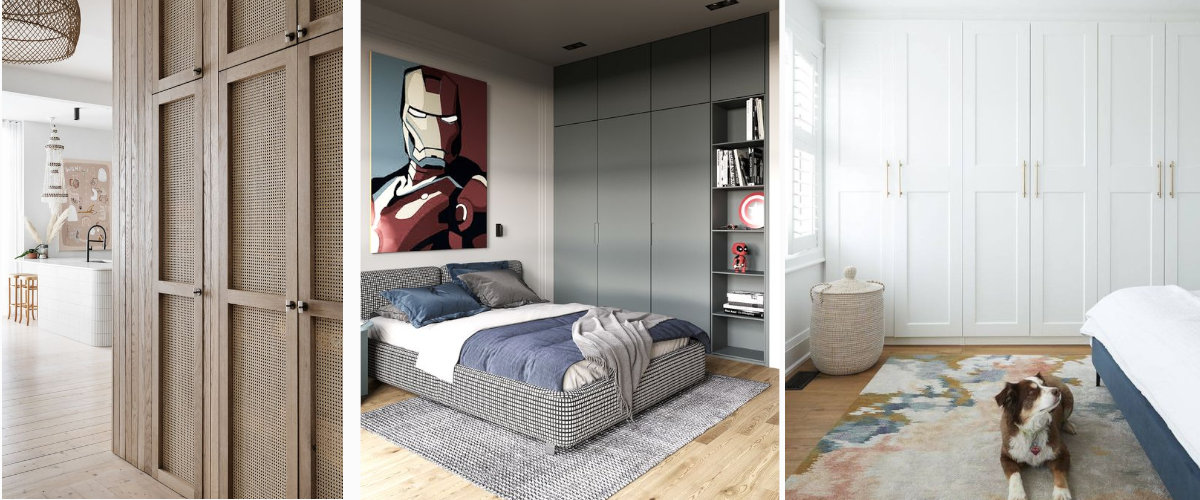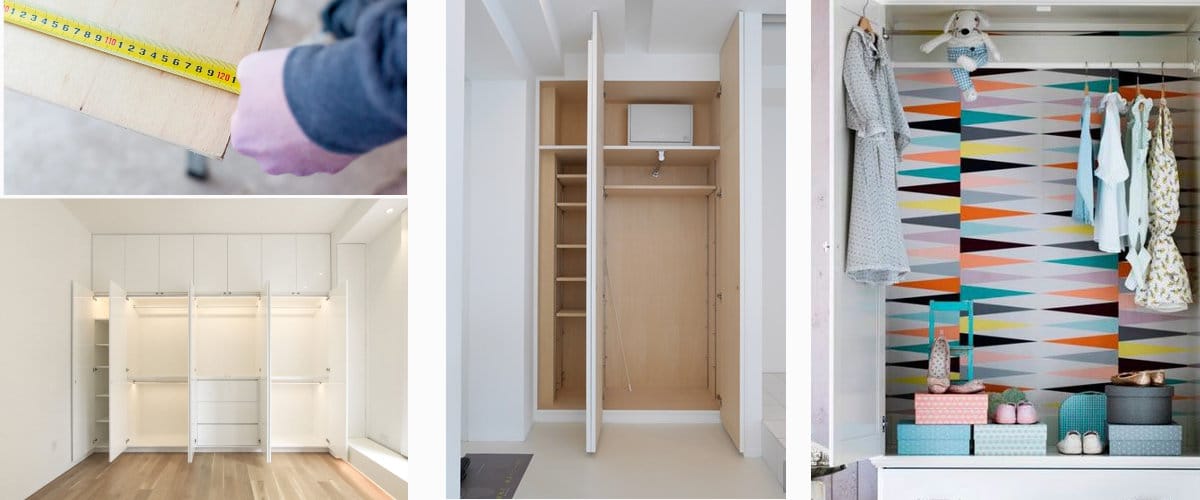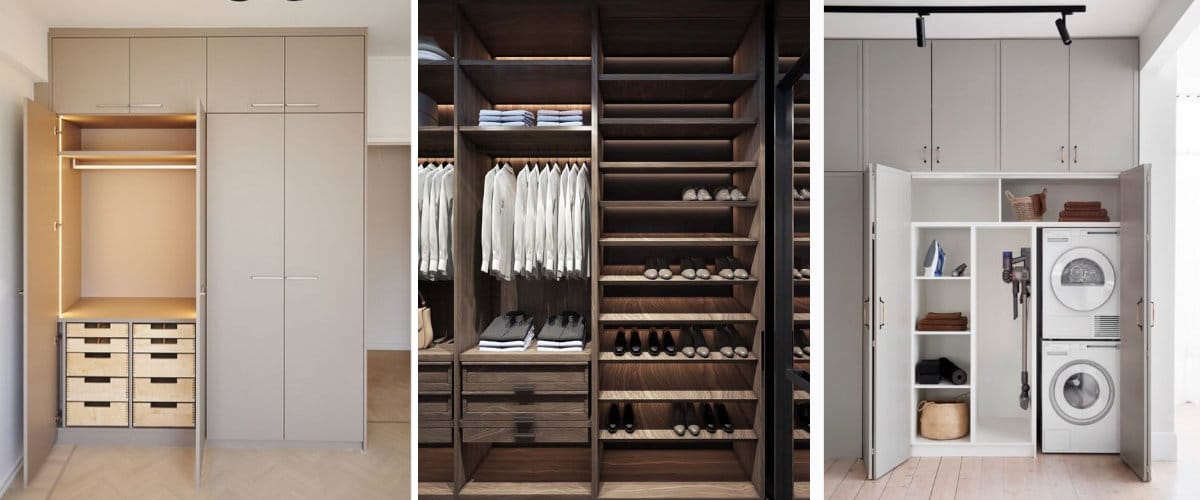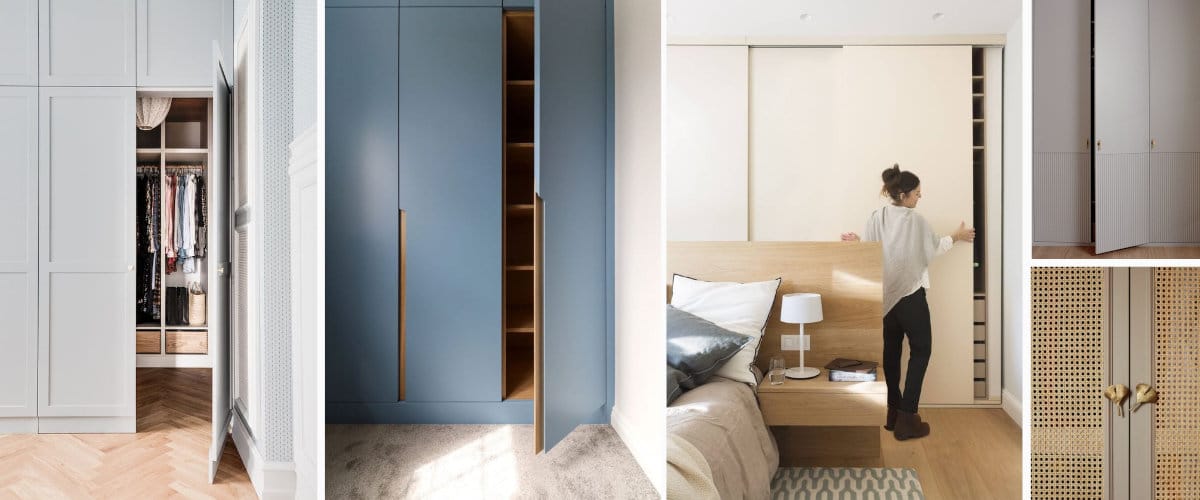
The fitted wardrobes allow optimization of storage space of a house. It is also a fact that these increase our interest in a particular home when debating between various purchase possibilities. But, do you know the keys to designing a built-in wardrobe with foundation?
Having fitted wardrobes in a home is lucky. They are comfortable, discreet and provide us with numerous storage options. Dress them and distribute them properly, when these are but a hole in the wall, should be a priority. And no, it doesn't have to be expensive; the budget will be conditioned by the accessories and extras you want to add.
When we design a built-in wardrobe, there are many considerations that we have to take into account. First, we must take care of its interior, both the lining and the distribution, key for the wardrobe to cover our storage needs. Then, of its external appearance, equally important. But let's go step by step.
Inner liner
Coating the built-in wardrobe is important, not only because it offers us the possibility of customizing its interior to adapt it to our possibilities, but also because it protects the clothes from the humidity of the walls. Cleaning is also easier and it is not a less important factor.

The usual thing is to cover the inside of the wardrobe with thick enough melamine boards to be able to fix the shelf supports and other elements on them. We are talking about a board of at least 16 mm to be able to meet these requirements that you must fix with a mounting adhesive to the floor, wall and ceiling
Is your wardrobe already covered but do you want to change its aesthetics? If the coating is not in the best condition or you do not like the color, you have several options to renew your aesthetic: place thin melamine panels on top of the old ones, paint the lining or apply wallpaper or vinyl.
Interior distribution
It is essential to know how we want to use the wardrobe to configure your interior. What are we going to keep in the closet? How do we want to save it? Taking into account the elements of order to add will help you design a more practical distribution.
A built-in wardrobe is organized in vertical sections called “bodies” that should not exceed one meter wide. If you order a custom design from a professional, you won't have to worry too much about these issues. However, if you want to resort to standard storage solutions to dress the interior of the built-in wardrobe, you should know that these are usually designed, mainly for bodies of 60 and 80 centimeters.

You should choose these solutions and accessories depending on the garments or items that you are going to store in the built-in wardrobe. For example, to hang coats you will need a bar and a hole at least 120 centimeters high. There are elements that are essential in any wardrobe, others, on the other hand, will be more or less necessary depending on what you want to store in them. Usually, the most popular plugins are:
- The bars. They are the star element of any wardrobe. A bar with a vertical space of between 80 and 120 cm will allow you pants, shirts and jackets. But you will need a space of at least 140 to hang longer clothes such as coats or dresses.
- Shelves. The shelves are useful for storing numerous products, from sweaters to towels or hygiene products. The best thing is that the shelves can be adjusted in height so that you can adapt the space to your needs at all times. That they do not measure more than 40 centimeters wide and that they are at a medium height so that you can comfortably access the bottom of them.
- Drawers: The drawers allow us to access what we store in the background with greater comfort than the shelves. They can also be stored in them, a wide variety of articles: T-shirts folded to the Marie Kondo style, elastic pants, socks, documents... Today there are also fantastic dividers to make them even more practical.
- Zapatero. Some modules for shoes in the lower part of the built-in wardrobe are the solution to keep these in order.

If you want your built-in wardrobe to be totally up-to-date and not to miss any detail, you definitely have to add lights. Apart from being an original and very colorful decoration element, it is really practical
front design
The fronts visually finish off the wardrobe and they allow us to play with a specific decorative style, thus enhancing it in the room. Do you prefer classic doors with moldings or minimalist style doors with a handle? White doors or in some daring tone that makes the wardrobe not go unnoticed?

Beyond the merely aesthetic decisions, there will be another that you must make regarding the doors when designing a built-in wardrobe. Folding or sliding doors? Sometimes the decision will be simple and will be conditioned by the space you have in the room.
Hinged doors need between 50 and 60 cm of free space so that it can be opened without difficulty. If you opt for them, you will only have to choose which side you want them to open to, taking into account the possible obstacles. The sliders, meanwhile, move on rails so they do not take up space.
Have you found these keys to design a built-in wardrobe practical? Take care of your design; There are few things as important as storage space in a home.